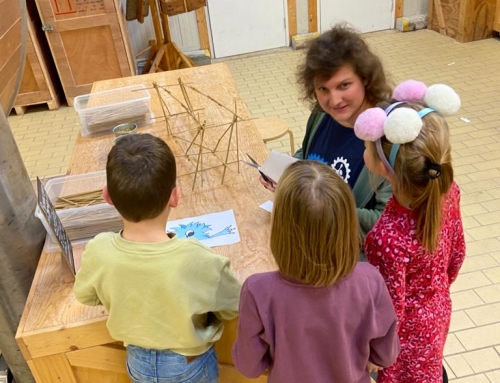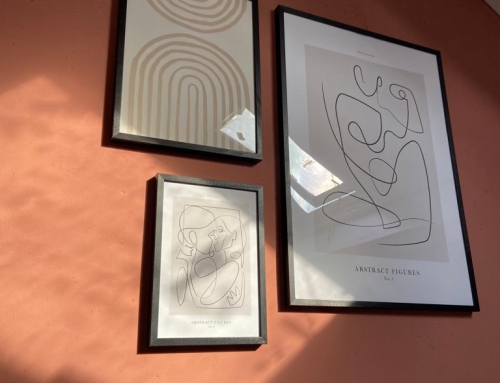Normally, I would start a blog post with ‘in the previous blog I wrote about…’. Nevertheless, this blog is different. This is my last and final blog that I write while doing the project for Innovation Square and while studying Social Innovation. And to be honest, I have a hard time writing it. This is because while working on societal challenges in the world of transformative social innovation, you are never finished or done. There is always more to discover and more to ‘solve’. There are so many different angles, themes and directions to go which makes it hard to step out for a moment. Nonetheless, this blog provides the overall story of the previous blogs I wrote and a reflection of the process.
Where it started
It all started with my interests and qualities. I noticed that I want to connect people, I want to build relationships, come to a common ground and deal with different perspectives. I argued that I tend to work with a human-centric approach in which I empower people and work bottom-up. It is about co-creation, so instead of doing things for each other, we need to do it with each other. I believe, that if a group does not feel the urgency of changing, a solution will never be sustainable. With this been said, I started the project at Innovation Square. A physical place at Breda University of Applied Sciences, where education, research and industry come together. This place consists of different perspectives and it was my job to build a community with them, to create a living system based on ownership and shared responsibility.
Process
Soon I found out that a community was not necessarily the thing that was needed. The participants of the project said that they agree with becoming a community but in fact, they act differently, this made the problem even more complex and messy. I thought that I had to use a bottom-up approach by involving them more in the process. Instead of doing things for them, I started doing things with them. In this way, you deconstruct their beliefs so that they started understanding and seeing the value of participating. My professional view in this process was to focus on the dialogues, relationships and let go of control.
That Innovation Square needed another way of working, said something about their struggle with finding the right structure for the place. If an organisation has to choose and use the right structure, more and more perspectives come in to play. When deciding to work with a bottom-up approach, you automatically state that there is also an up. If there is an up, there most of the time is a bureaucratic structure. In the Netherlands, educational institutes are most of the time organised in a bureaucratic manner, very systematic and based on rules and restrictions. Building a living system, like Innovation Square desires, was therefore difficult. There was a struggle between the lifeworld and the system world.
I believe, that this is a struggle because it looks like organisations have to choose. They have to choose between a hierarchic structure based on rules and restrictions (systematic) or to not really have a structure and have an equal process (lively). When looking at this struggle on a macro level, I believe that maybe a mix of both ‘worlds’ is the reality. Different perspectives showed, that there can be a combination of both worlds, a structure ‘somewhere in between’. Understanding the different perspectives in these worlds and try to learn from them while creating or developing your own structure. This is a process in which all participants are needed.
For the project, it was interesting to find out what the structure ‘somewhere in between’ would look like. After analysing some examples, I concluded that a structure only works if the participants feel ownership and the need to act in this structure. It does not work to impose a structure if there is no need for it. If the participants do not see the added value, or if they do not feel the urgency, nothing will happen. This was an important thought for the project and it makes me wonder ‘okay what should I do now?’. I knew my strengths and I tried to use them during the project. For example, my connective power and social skill. Nonetheless, maybe a different approach was needed. Developing the living system based on needs, demands and relationships, while involving them more in the decision-making process so that in this way the ownership feeling will occur.
Involving participants in a process sounds easy but reality shows that this is hard and difficult. Participants will participate if they understand and see the added value. While the added value arises if people start participating… This is a vicious circle and the problem of Innovation Square. When trying to deal with this problem, I found out that there was even a bigger issue going on. How can you demand people to participate if they do not know what they are going to participate in? The foundation, concept and purpose of Innovation Square were not clear. Innovation Square needed to do a step back and there was a need for transformation.
‘Transformation’ sounds easy, whereas as an individual, I have a hard time achieving change. In my opinion, it is hard to change as an individual because of the bigger powers in our society that contradict with my intentions. I questioned myself ‘how can I have an impact if there are people and organisations with more power and influence that act differently?’ and ‘do people in individualistic countries act only if their close family members or themselves are affected?’ Luckily, a societal shift is happening. This means that we have to collaborate more and that our society demands more participation and collectivisation. The different actors of our societal playfield are coming closer towards each other and our society becomes more transparent.
This shift in the societal playfield is also needed at Innovation Square. The participants of the place have to collaborate, participate and in this way create a collective. They together have to create a structure that fits them because it does not work to impose one. By creating it themselves, deeper understandings of the place and the purpose will occur. If they understand this, they can relate to it and in the end, act like it. There needs to be a person who facilitates this process and who creates room for these deeper understandings.
Complex, societal challenge
In the end, the complex societal challenge of this project was the struggle of finding the right structure and way of working while developing a living system. It was complex because I had a hard time involving the participants to participate and because underlying issues came across during the process. Like the Coronavirus that kicked in and the impact of not having a strong and clear foundation.
I believe that searching for the right structure in the educational domain is hard because, in this domain, many rules and restrictions are set. There constantly is a fight between systematic patterns and lively patterns. The things we see in society, the systematic streams are holding us back. We want to change the streams below this surface, the deeper meanings, the things we cannot always see. The power of the bureaucratic system is stronger as the needs and demands at Innovation Square. Nevertheless, changing costs time and I just started this process at Innovation Square. I started transforming the dialogues by focussing on possibilities and opportunities, I tried to empower the participants and focused on the successes of the place.
In the end, this leads to a transformation in the way of working. Instead of focussing on the practical and systematic patterns. A focus on the right of existing and shared emotional connections arose. Innovation Square started appreciating their values, qualities and purposes better which resulted in a stronger foundation. They did a step back internally to in the end flourish better externally.
Reflection
My project came to an end and at this moment I am quite satisfied. When reflecting on this project, there are of course many things that I could have done differently. I argued to involve the participants more in the decision-making process but in reality, I steered the process too much; I could have made more use of creativity and design research methods; I was too busy with the systematic patterns; and to be honest I can come up with many more aspects.
But I think that this is always the case when doing a project or when facilitating a process to deal with complex challenges. Cause and effect are not clear, there is no one solution and most important, processes are never linear. It is a big mess of uncertainties, unpredictability and everybody approaches and sees it differently. You go with the flow and react to the happenings in the process. The design and approach you make on the forehand, are just guidelines. Reality shows that this design and approach changes constantly during the project. This is because you are not doing it alone, you depend on the participants and external factors that influence the process.
To conclude, I am happy with the result of the project at Innovation Square. I worked as a professional and I started a transformation. I stepped out and knew that this transformation is going to continue, I started shifting and there is no way back because things are already changing. At the beginning of this blog, I wrote that I will step out for a moment. By this I mean, that I will continue the process of transforming. In September 2020, I will start the course Sociology to learn more about society, patterns, behavioural change and social innovation. I just started with having an impact and I am not giving up!





